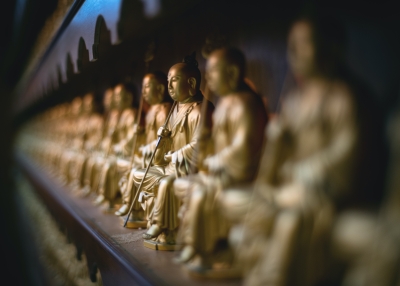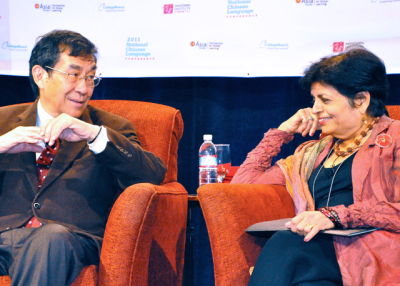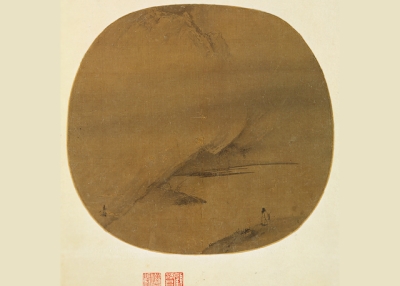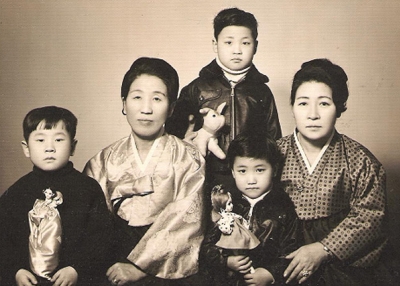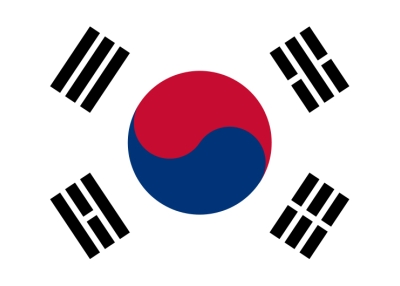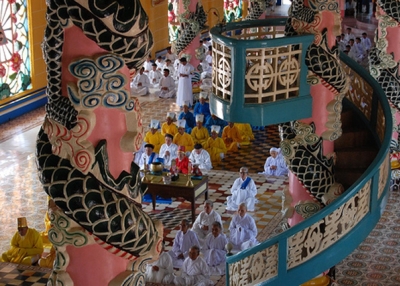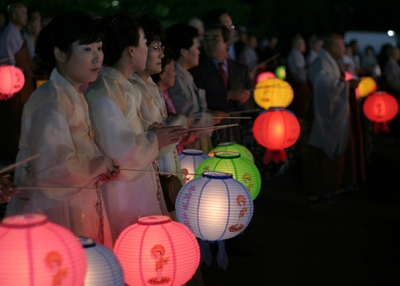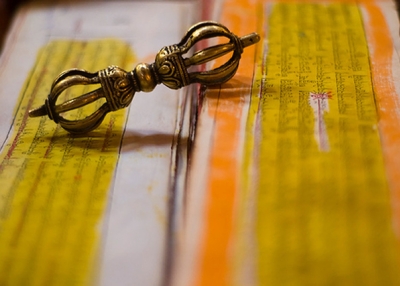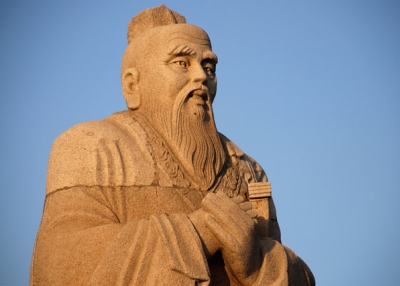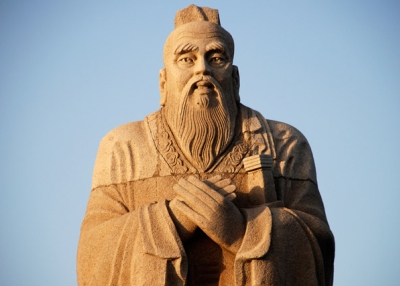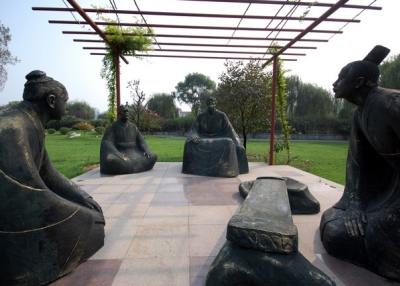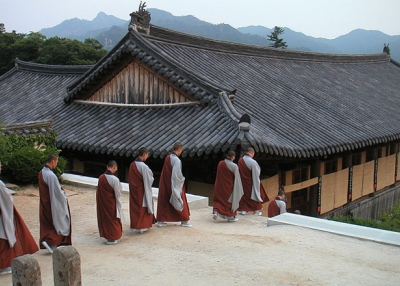Just Who Was Confucius, Anyway?

by Chris Livaccari
February 2010
So just who was Confucius, anyway? It’s a question I’ve been hearing a lot lately. Confucius: Who was he? A kind of Chinese Jesus? A martial arts master? A bitter old man with a long, wispy beard? A fortune-cookie prophet? Although I’d proclaim “None of the above!” to any of these suggestions, the question of Confucius is one that seems simple, but in fact challenges many of our most fundamental assumptions about history, philosophy, and identity. Like many of the “great” figures in the cultural history of the world, “Confucius” as we now know him is both more and less than he was when he lived, breathed, and taught well over two-thousand years ago. The symbol of Confucius and his legacy has been extremely powerful, not only in the Chinese-speaking world, but also in Korea, Japan, Vietnam, and beyond. But who was he? As we launch our Hanban–Asia Society Confucius Classrooms Network, it seems an important moment to try and develop an answer to this question.
Let’s start with his name: Confucius. It doesn’t sound very Chinese! In fact, it sounds more like a Roman Emperor, ala Augustus, Claudius, or Marcus Aurelius. The man we now call Confucius was in fact known by the family name Kong and the given name Qiu (pronounced CHEE – OH). He was born in the state of Lu in the middle of the sixth century BCE, a time that the philosopher Karl Jaspers has famously called “The Axial Age,” as it was the time not only of Confucius, but also of Plato, the Buddha, Zoroaster, and the Hebrew prophets. This was before there was a “China” as we now know it, but the state of Lu is in the territory of today’s Shandong province, the great cradle of Chinese civilization around the Yellow River, set on a peninsula that juts toward Korea. Confucius’ hometown in Qufu is now a famous tourist destination for those who wish to better understand his life and thought. Like all the great sages of antiquity, Confucius is now known by his family name Kong plus the title “Zi,” or “Fu Zi,” a term of veneration and respect with the meaning of “teacher.” In modern Chinese, he is known as “Kong Zi” or “Master Kong.”
So what’s with the Latin name? We have the Jesuits to thank for that. In the late sixteenth century, two Italian Jesuit priests, Michele Ruggieri and the much better known Matteo Ricci, were instrumental in mediating the intellectual exchange of philosophical concepts and ideas between China and Europe. Ruggieri and Ricci are credited with compiling a Portuguese–Chinese dictionary that was the first of its kind for translating between Chinese and a European language. Ricci famously arrived in China intending to couch the Catholic faith in Buddhist terms, as he recognized many commonalities between Buddhism and Christianity, but he eventually recreated himself as a Confucian gentleman. Ricci came to realize that the hierarchical nature of Chinese society at the time meant that a top-down approach that focused on the Confucian scholar-gentleman was much more likely to gain converts for Christianity than a bottom-up strategy that favored Buddhism, once a religion of the aristocracy but in Ming times more popular with the common folk. So Ricci exchanged the plain robes of a Buddhist monk for the imperial finery of a Confucian official, in order to win hearts and minds for Christianity in China.
While we might at first think that Ricci has nothing to do with the question “Who was Confucius?”, it’s vitally important to remember that Confucius, much like Socrates, is known to us only through a collection of sayings and anecdotes recorded by his followers, and for those of us in the English-speaking world, by the translators and interpreters of their works into English. The legend of Confucius really starts to take shape in the biography of the great sage written by the historian Sima Qian in the second century BCE. In this way, “Confucius” is not the man “Kong Qiu,” but a set of images and ideas that have become associated with him over the last two millennia. The teachings of Confucius are known to us primarily through a text that has come to be known in English as The Analects--a collection of his sayings compiled by his followers. When we look for the identity of Confucius, it’s best to start with The Analects. While there are many translations into English, I continue to return to that of Arthur Waley, the most important translator of classical Chinese, Japanese, and Mongolian literature and philosophy into English in the first half of the twentieth century. Waley famously never traveled China, Japan, Mongolia, or any other Asian country, but became the foremost interpreter of East Asian literature for Western audiences. In Waley’s translation, Confucius’ thought is captured at its sagely best, and manages to transcend the fortune-cookie wisdom with which so many of us are familiar, but retains a bit of Victorian elegance and anachronism.
The first thing that strikes a reader of The Analects is perhaps that, although we are supposedly reading the recorded sayings of one of the greatest intellectual figures in the history of human civilization, Confucius himself explicitly cautions against the idea that his thinking is in any way revolutionary or even new. He strongly contends that he is merely transmitting the thought of the ancients, as if to urge contemporary audiences back to a Golden Age when men (and yes, he probably only meant “men”) were more virtuous, more heroic, and more cultivated than his contemporaries. This seems a remarkably familiar rhetorical strategy: Don’t take my word for it; the sages of old enunciated the same ideas. And Confucius continues what must be said to be an incredibly conservative strategy of discourse: Don’t innovate, stay true to the old ways, honor your parents, remember your duties and responsibilities, i.e. the perfect philosophical system for a newly emerging state trying to define its purpose and achieve social stability.
Confucius emerges in the text as a paragon of humility and modesty, a trait that Americans often remark upon when they deal with East Asian people personally or in business. At the very beginning of The Analects, he declares, “To remain unsoured, even though one’s merits are unrecognized by others, is that not after all what is expected of a gentleman?” (Waley, 83). He stresses the value of knowing what one doesn’t know, and cultivating the ability to learn from anybody, no matter how humble or mean. He famously notes, “Even when walking in a party of no more than three I can always be certain of learning from those I am with. There will be good qualities that I can select for imitation and bad ones that will teach me what requires correction in myself.” (Waley, 127). Confucius’ spirit of humility in these passages is shared by the Daoist thinkers Laozi and Zhuangzi, whose texts posed the greatest challenge to Confucian thought. But while Confucian thought was solidly focused on the world of social relations and social stability, the Daoists came to be associated with the love of nature and transcendence of social norms. The typical pattern that emerged in Chinese society was that a scholar would be Confucian in outlook during the course of his professional life, and then retire to the countryside to drink wine and write poetry with a Daoist spirit. The two philosophies started as antagonists, but ended up as complementary aspects of Chinese intellectual and cultural life.
So: humility, modesty, honesty, studiousness, and social duty. Not very controversial stuff, but many would say it was the basis for the spectacular economic success of the East Asian economies in recent years, starting with the rise of Japan in the 1980s. But there are those who have had problems with Confucius and the intellectual movement of “Confucianism” inspired by his thought. First off, the Communist revolutionaries of twentieth-century China made the eradication of “feudal” Confucian society one of the pillars of their work. If you want to understand how many Chinese intellectuals in the early part of the 20th century regarded Confucianism as truly vile, just read Lu Xun’s story, “A Madman’s Diary,” in which he associates Confucian values and social relations with cannibalism. The early Communists saw Confucianism as an overly conservative and moribund tradition that prevented social equality and justice by promoting hierarchies and obedience to elders and superiors. Another aspect of Confucianism that drew criticism from Lu Xun and other commentators relates to the status of women and the idea that a woman’s allegiance in life should pass from father to husband to son. How much misogyny there actually is in The Analects is a matter open to debate, but it is fair to say that Confucius and his successors were interested in creating a society that was male-dominated and in which the primary duty of women was to the household. This is fairly standard stuff for Axial Age thinkers and it is clear that many contemporary proponents of Confucian values hold more progressive views on the role of women. And while the Communists violently attacked Confucianism during the Cultural Revolution, his image has been vastly rehabilitated in recent years by the Chinese government, and he has been honored as the preeminent figure in Chinese cultural history. Indeed, for all the criticisms about Confucianism’s promotion of an unequal society, the civil service examination system that developed around Confucian texts has been lauded as an example--however limited--of social mobility in imperial China. Although preparing for the exam took an awful lot of resources and leisure time to which most of the population simply had no access, it was theoretically open to all and there are examples of scholars pulling themselves up by their bootstraps from relative poverty and obscurity to power and influence.
The thought of Confucius as expressed in The Analects is one of social duty, the Golden Rule of “do unto others as you would have them do unto you,” and study, study, study! Hard work, self improvement, and personal growth are hallmarks of the text and clearly evident in the East Asian obsession with education and learning. You can sense the influence of these values when you enter a Chinese high school or a cram school in Korea or a Honda factory in Japan, and you can find their seeds in the sayings of The Analects. And like Aristotle, Shakespeare, or Goethe, the image and legend is quite a bit larger than the man himself.
In the second half of this piece (to be published next month), we’ll look more closely at the language and thought of The Analects and how Confucianism, Daoism, and Buddhism became the “Three Teachings” of pre-modern China.
